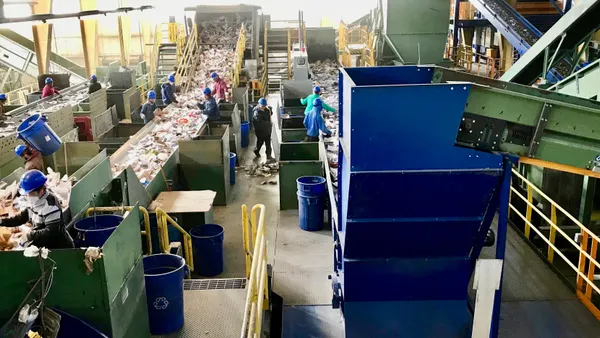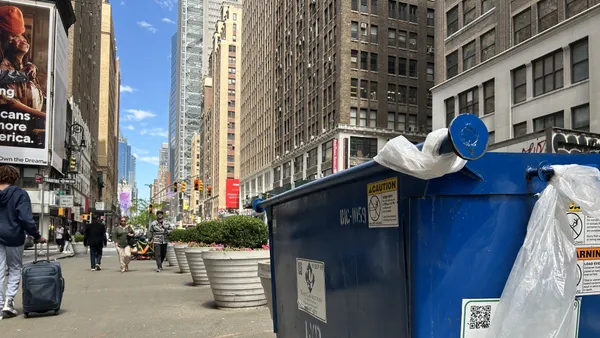Dive Brief:
- Santa Fe, NM is proposing increased residential curbside and commercial recycling fees to help fund a single-stream recycling program with automated pickup — a program slated to launch September 2016. Residential rates would increase by 14.1%, and commercial rates would increase 17%, effective July 1.
- The plan would generate about $760,000 a year to pay for a $4.2 million New Mexico Finance Authority loan for vehicles, roll-off dumpsters and carts. If the model is adopted, fees would remain unchanged until 2020, according to city documents.
- The city cited other benefits such as increased worker safety with automatic collections and an anticipated increase in collected materials.
Dive Insight:
Santa Fe is steadily ramping up recycling, expanding its list of acceptable materials and setting up a system where its transfer station does not have to sort the items, ultimately diverting more materials to avoid the cost of expanding Caja del Rio Landfill.
Under the new program, glass will no longer be picked up, but mobile disposal stations will be set up at locations throughout the city each day of the week. The stockpile of glass previously collected has been crushed and will be used as part of a leachate-collecting liner on the landfill. While glass was removed from the "accepted" collection list, the city expanded types of paper and plastic to include cereal boxes, corrugated cardboard, brown paper bags, plastic water bottles, deli clamshells, and yogurt containers.
Nick Schiavo, the city's public utilities and water division director, said the newest focus — the rate increase — will bring more economic advantages, in that the residential recycling program could eventually become self-sufficient. While the recycling program as a whole operates in the black, the residential business runs a $300,000 annual deficit.
In July, Adam Schlachter of the Solid Waste Management Agency's Buckman Road Recycling and Transfer Station told the Santa Fe Reporter that he sees a growing domestic market for recyclable materials, which he believes raises hopes that materials will be returned to U.S. manufacturing centers rather than those in China or India.










